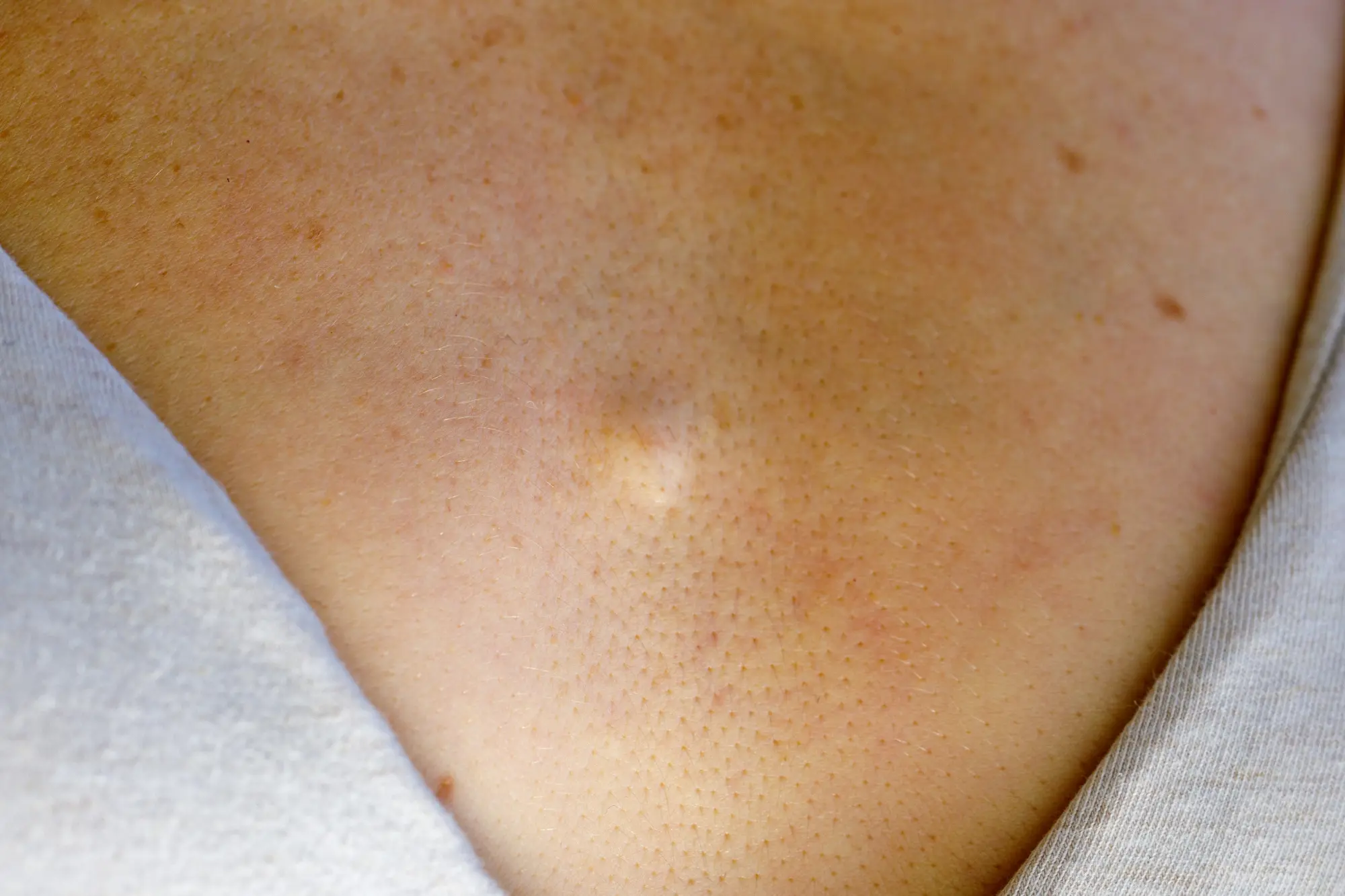
Sebaceous Hyperplasia
- Home
- Sebaceous Hyperplasia
Sebaceous Hyperplasia Treatment in Terre Haute & Vincennes
Not every small bump is acne — and not every skin change means something's wrong. Sebaceous hyperplasia is a common, harmless skin condition that causes small, yellowish, or flesh-colored bumps, usually on the face. While it isn't dangerous, it can be frustrating, especially when it's mistaken for acne, skin cancer, or other growths.
At Biltmore Dermatology, we help patients get clear answers and straightforward options — whether you want reassurance, treatment, or both.
What Is Sebaceous Hyperplasia?
Sebaceous hyperplasia is a condition where oil glands (sebaceous glands) become enlarged, creating small, visible bumps just under the skin. These glands are part of your normal skin anatomy, but with age, hormonal changes, or sun exposure, they can become overactive or enlarged.
It most commonly appears as:
- Small, soft, flesh-colored or yellow bumps
- Slightly indented centers (sometimes mistaken for pores or basal cell carcinoma)
- Smooth surface, often with tiny visible blood vessels
- Clusters or isolated bumps — usually on the forehead, cheeks, or nose
Who Gets Sebaceous Hyperplasia?
- Most common in adults over age 30
- Frequently seen in people with oily skin or a history of acne
- May be more noticeable with sun damage or aging skin
- Also seen in transplant patients or those taking certain medications (like cyclosporine)
While not dangerous, these bumps can become more visible over time, especially in areas with frequent sun exposure.
Is It Dangerous?
No — sebaceous hyperplasia is completely benign. However, because it can resemble other skin lesions, especially basal cell carcinoma, proper diagnosis matters.
If you've noticed a new bump or one that's changed, it's smart to have it evaluated. We examine the bump under magnification and, if needed, may recommend a simple biopsy to confirm.
How We Treat Sebaceous Hyperplasia
Treatment isn't always necessary — but many patients choose removal for cosmetic reasons or peace of mind.
Options may include:
- Electrodesiccation (light cautery): Gently flattens the bump with minimal downtime
- Laser treatment for multiple or clustered lesions
- Topical medications to reduce oil gland activity (for recurring or widespread cases)
- Cryotherapy (freezing): Used occasionally for small lesions
- Monitoring only if no treatment is needed
We'll walk you through your options and help you decide what's best for your skin, your comfort, and your goals.
What It's Not (But Sometimes Mistaken For)
Because sebaceous hyperplasia can resemble other conditions, we often evaluate it alongside:
- Basal cell carcinoma — especially if bumps change or bleed
- Milia — small white cysts just under the skin
- Acne or closed comedones — though these don't typically have the same shape
- Warts or skin tags — if on the forehead or eyelids
Our job is to remove the guesswork — and help you understand what's going on.
Why Choose Biltmore Dermatology?
- 24+ years of dermatology experience
- Board-certified dermatology provider Ryan T. Patterson, NP-C, DCNP
- On-site evaluation, diagnosis, and treatment — no bouncing between providers
- Cosmetic precision + medical accuracy
- Serving Terre Haute, Vincennes, and surrounding Indiana communities
We don't rush, guess, or push cosmetic treatments you don't want. We explain, clarify, and treat what matters to you.
Get Clear Answers on What You See in the Mirror
Sebaceous hyperplasia isn't harmful — but it's your skin. If something bothers you, we take it seriously.
Whether you're just seeking confirmation, want smoother skin, or need reassurance that it's not something else — we're here.
No referral is needed. Walk in today. Stay for the care and expertise.
Come for answers. Come for relief. Come for the care.